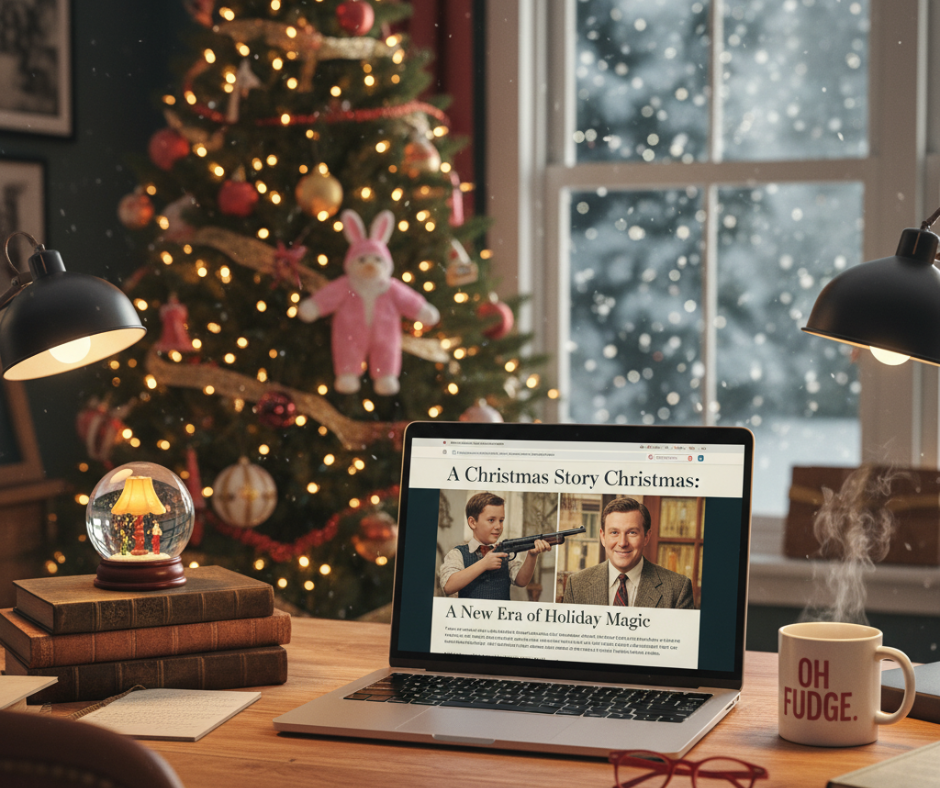Few holiday films hold a place in the hearts of viewers quite like A Christmas Story. Since its release in 1983, this nostalgic film about young Ralphie Parker has become a timeless tradition for families across North America and beyond. Its unique blend of humor, warmth, and realism captures the childhood Christmas experience in a way that is both relatable and entertaining.
In 2022, the much-anticipated sequel A Christmas Story Christmas brought the Parker family back to screens, rekindling the festive spirit and offering audiences a chance to reconnect with their favorite characters. This article explores both films, analyzing their themes, impact, and why they remain essential parts of holiday celebrations. It also examines how the sequel complements and extends the original, providing new material while preserving tradition.
The Original Film’s Enduring Appeal
A Christmas Story is loosely based on stories told by author and narrator Jean Shepherd, reflecting his childhood in the 1930s and ‘40s. The story revolves around Ralphie’s quest for a Red Ryder BB gun, despite warnings from adults that “you’ll shoot your eye out.”
What makes the film distinctive is its balance of humor and heart, capturing the joyful anticipation and chaotic reality of family life during the holidays. Classic scenes like the leg lamp “major award,” the frozen tongue on the flagpole, and the infamous pink bunny suit have become iconic, deeply etched in popular culture.
The film’s mix of universal themes — childhood innocence, family dynamics, and holiday traditions — explains its continuous popularity. It resonates with viewers of all ages, making it an evergreen holiday classic.
Introducing A Christmas Story Christmas
The 2022 film A Christmas Story Christmas serves as a direct sequel, revisiting Ralphie Parker as an adult, now a husband and father, returning home for Christmas with his family. Peter Billingsley reprises his role, lending authenticity and continuity.
Where the original celebrated childhood wonder, the sequel explores themes of legacy, loss, and reconnection. Ralphie grapples with family struggles, the pressures of modern life, and his desire to revive holiday traditions in his own way.
The sequel honors the original’s tone with its blend of humor and sentimentality while expanding the Parker family’s story to resonate with contemporary viewers.
Themes of Nostalgia and Growth
Both films deeply engage with nostalgia but approach it from different perspectives. The original film invites viewers to relive childhood Christmases filled with wishes, mischief, and familial love.
The sequel, meanwhile, contemplates how nostalgia shapes adulthood and how cherished traditions are maintained or adapted. It explores the tension between holding onto the past and embracing change, a theme many families experience as generations evolve.
These complementary themes enrich the narrative, making the combined viewing of both films a rewarding experience.
Humor That Transcends Generations
Humor is central to both films but manifests differently according to the stages of life depicted. The original employs childlike innocence, physical comedy, and situational humor that appeals to young and old alike.
The sequel adapts this humor to adult perspectives, incorporating family dynamics, relationship nuances, and the challenges of parenthood. The comedic moments remain light-hearted, preserving the franchise’s signature warmth.
This comedic balance ensures that audiences of various ages can enjoy the films either separately or as a pair.
The Cultural Impact of the Parker Family
The Parker family has become emblematic of American holiday traditions. Their struggles and joys mirror many families’ experiences, making them relatable cultural figures.
The original’s annual marathon broadcast since the late 1990s has solidified the film’s place in holiday rituals. The sequel revitalizes interest by inviting a new generation to discover the family’s adventures.
Together, the films contribute to the ongoing dialogue about family, tradition, and the changing nature of Christmas celebrations.
Production and Performance Highlights
Peter Billingsley’s reprisal of Ralphie anchors the sequel with genuine affection and skill. Returning cast members alongside new additions provide a credible, charming ensemble.
Both films exhibit careful attention to period detail in costumes, sets, and props, preserving the nostalgic atmosphere crucial to their appeal.
The sequel also benefits from modern production values that complement its storytelling without overshadowing the original’s aesthetic.
Critical Reception and Fan Response
While the original A Christmas Story received widespread acclaim and became a beloved classic, A Christmas Story Christmas garnered mixed but generally positive reviews. Fans appreciate the continuation of the Parker family saga and Billingsley’s performance.
Critics acknowledge the sequel’s nostalgic strengths and emotional depth, though some desire more narrative innovation. Nevertheless, for holiday viewers seeking familiarity and warmth, the sequel proves a satisfying extension.
Why Both Films Matter Today
The original and sequel, together, embody the evolving holiday experience — celebrating childhood innocence while addressing adult realities. Their interwoven stories promote reflection on what Christmas means across life stages.
For families, watching both films can spark meaningful conversations about tradition, change, and connection. For individuals, they offer comfort and a reminder of the enduring power of family and holiday spirit.
Discover More About A Christmas Story
For extensive history, analysis, and fan resources on A Christmas Story, readers may visit its comprehensive Wikipedia page: A Christmas Story – Wikipedia.
Read More: 28 Things You Didn’t Know About A Christmas Story
Conclusion
A Christmas Story and A Christmas Story Christmas together offer a rich, heartfelt holiday narrative that celebrates the magic of Christmas across generations. The timeless humor and relatable family dynamics in the original film are beautifully complemented by the sequel’s mature reflections and renewed festive spirit.
This combination invites viewers to relive cherished memories while embracing new ones—making both films indispensable for anyone looking to capture the true essence of the holiday season.



Add a Comment